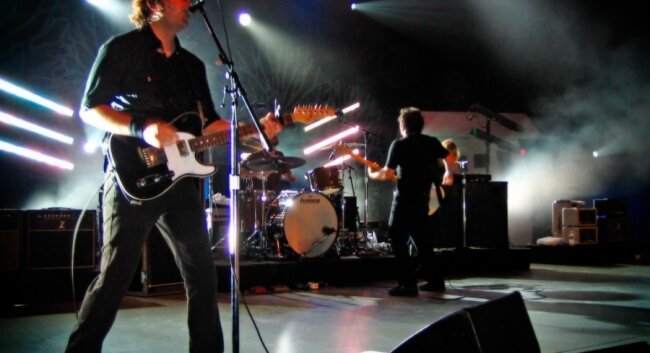Mix and run: Death Cab finds new formula in Codes and Keys
Death Cab for Cutie has one of indie rock's great success stories. The act started in the late 1990s as Ben Gibbard and a cassette recorder but soon became a full band signed to the young and nearby label Barsuk. After a handful of albums, the group found its music on Fox television hit The OC, part of a sequence of events that led to a deal with Atlantic Records after the 2003 release of Transatlanticism. The band's first major label release, Plans, went platinum, with the following albums charting at number one and number three.
The group utilized those resources for a new approach to creating 2011's Codes and Keys, a pretty, reflective rock album enhanced by increased electronic atmospheres and crisp production. Drummer Jason McGerr joined the group in time to record Transatlanticism and was part of the group's transition from little indie act to mainstream force.
“Thank god we didn't go to a major label as a brand new band,” he says. “There was a five-year period of gradually doing more and more– visiting other countries and building a fan base. The biggest challenge was trying to balance keeping our sanity and using the resources of a major label.”
On Codes and Keys the group utilized those resources for a new approach. As McGerr explains, one of the biggest differences was “having built-in breaks throughout the course of the record.” The band would work on several songs over a few weeks, and then “take a break, pack up, move to a different city, change the whole environment.” On the next session, the band would record new songs while revisiting previous ones.
“By creating that space and distance between the recording and the tracking sessions allowed us to have fresh ears, fresh eyes, fresh minds. We would work really hard to get what we felt was the right thing in studio one, and sometimes we would revisit those songs six, nine, ten months later, and that way we were able to all agree on whether or not the things that we were committing were sticking.”
McGerr credits bandmate/producer Chris Walla for much of the creativity that sparked the process.
"Chris really didn't want us to just get in a room and pick up the instruments that we normally play and start writing and recording," says McGerr. "He wanted to hang songs and build songs on different types of instruments, sequences that were run by drum parts over keyboards; in other words, creating an environment that made us think a little harder about what we were doing.
“Each song became like its own album,” continues McGerr. “Each song was like tearing down and rebuilding the sound and the feel from the rhythm section, not just for myself but for [bassist] Nick [Harmer] as well. The biggest challenge for me was not having as much continuity in the recording process. I would record a song and I wouldn't hear the song again for six months or more. I didn't hear until the mixing process. I worried if what I'd committed was going to actually work out. We took care in recording and I just had to trust that the outcome was going to be the right thing for the record.”
While the band has expanded its sound throughout its career, the biggest sonic change on this album comes not from Walla's production, says McGerr, but from a surprising source: the mixing by Alan Moulder.
Moulder's worked with shoegaze bands like My Bloody Valentine and Ride, and he helps create textures that are new but not out of place for Death Cab. As McGerr points out, it's the first time a Death Cab album has been mixed by someone other than Walla, which, he says, “adds a whole different color and tone to it.”
The changes must have been working, as Codes and Keys stands as the band's most optimistic album. With keyboards largely replacing guitars and hope replacing melancholy, it feels like a new era for Death Cab, one in which the call to “stay young, go dancing” seems less like a fantasy and more like a plan.
